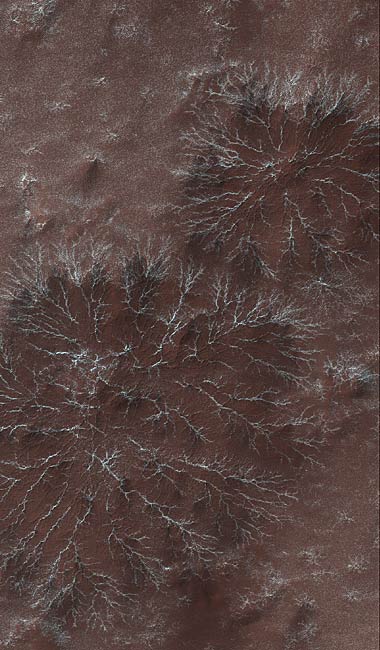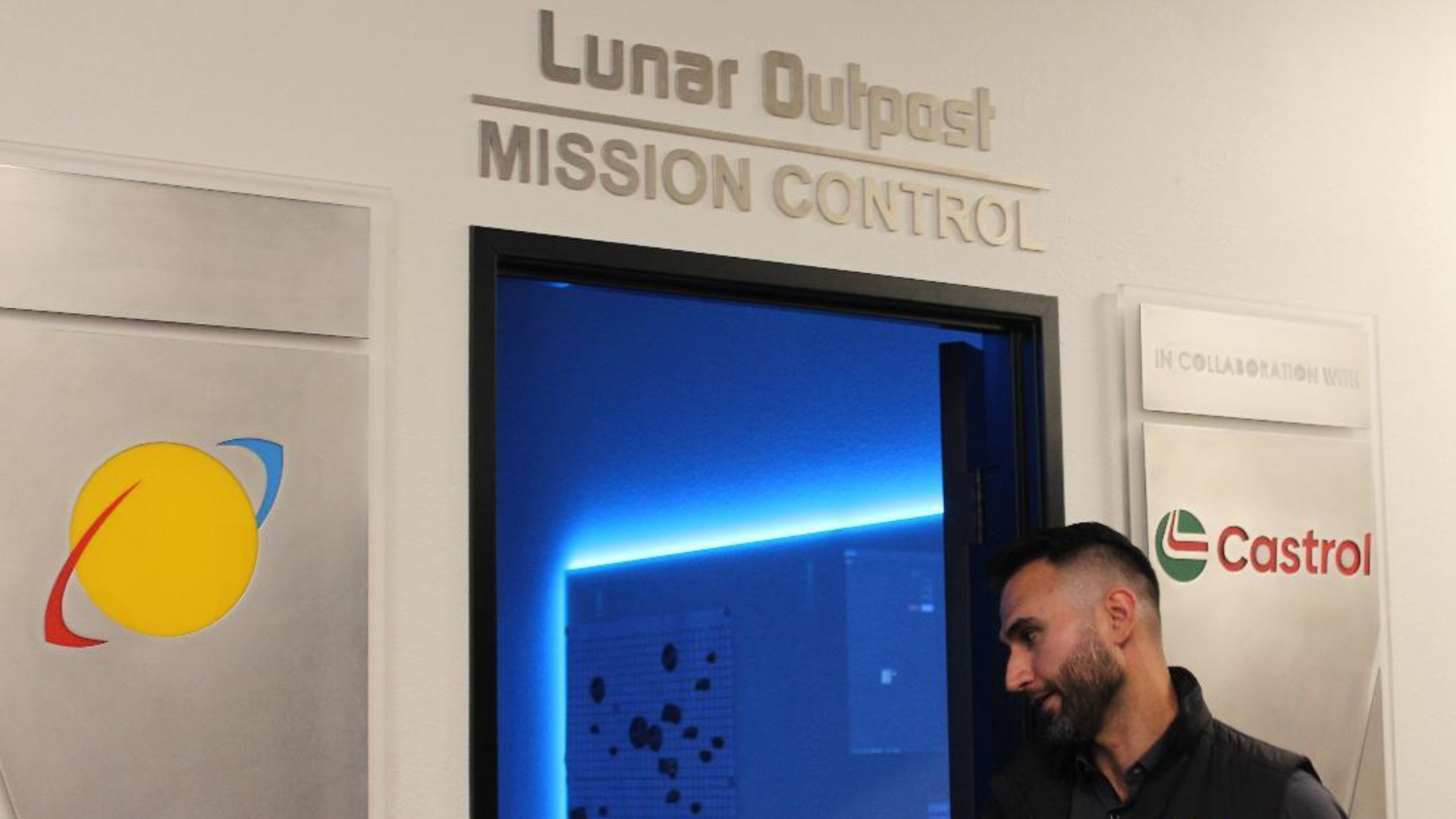Strange Shapes Seen on Mars

SANFRANCISCO—NASA scientists have discovered what might form some of the weirdestlandscapes on Mars, winding channels carved into the Martian surface thatscientists have dubbed ?spiders,? ?lace? and ?lizard skin.?
The unusuallandscape features form in an area of Mars? south pole called cryptic terrainbecause it once defied explanation.
But newobservations from NASA?s Mars Reconnaissance Orbiter, presented here today at ameeting of the American Geophysical Union, bolster theories that the intricatepatterns may be sculpted by springtime outburstsof carbon dioxide gas from underneath the frozen-carbon dioxide polar icecap.
Bottom-up
Mars, likeEarth, has seasons that shift as the planet orbits the sun. During the southernhemisphere winter, some of the carbon dioxide in the planet?s atmospherefreezes to form a translucentice cap made of the gas.
Comespring, the sun?s rays penetrate this layer of ice and begin to warm the red-rocksurface underneath.
?The sunpasses through the ice and warms up the surface because the surface is dark andabsorbs the sunlight,? explained mission scientists Candice Hansen of NASA?sJet Propulsion Laboratory in Pasadena, Calif.
Breaking space news, the latest updates on rocket launches, skywatching events and more!
The warmsurface then heats the ice layer from the bottom up, causing carbon dioxide gasto sublimate (like dry ice fumes used to imitate fog at a haunted house) fromit and gather underneath the ice.
As the gasaccumulates and its pressure increases, it seeks out weak spots in the ice andbursts forth, spewing carbon dioxide gas back into the Martian atmosphere. Thegas carries some of the dustfrom the surface along with it, which then settles into ?fans? on top ofthe ice.
?It?s aprocess unlike anything we have on Earth,? Hansen said.
Intricatepatterns
As thesurface material is carried out by the rushing gas, channels are carved intothe surface that form intricate patterns. Some, which scientists have dubbed?spiders,? have spindly channels that radiate outward from a center point.Hansen describes other patterns as appearing like lace or scaly lizard skin.
Just whatcauses these different shapes is a mystery. It could be different features ofthe underlying landscape or differences in the way the gas moves under the ice,but one thing is for sure Hansen said, ?there?s something that causes thedifferent morphologies.?
Fields offans of surface material are scattered on top of the ice that overlies thechannel features, increasing as the spring wears on and the sun beats down moreintensely. Eventually, as summer approaches, all the ice evaporates away,leaving only the intricate scars on the Martian surface.
- Video: A Wet Modern Mars?
- Mars Ice is Mostly Water: Good for Biologists, Bad for Terraformers
- Video: Mars Reconnaissance Orbiter
Join our Space Forums to keep talking space on the latest missions, night sky and more! And if you have a news tip, correction or comment, let us know at: community@space.com.

Andrea Thompson is an associate editor at Scientific American, where she covers sustainability, energy and the environment. Prior to that, she was a senior writer covering climate science at Climate Central and a reporter and editor at Live Science, where she primarily covered Earth science and the environment. She holds a graduate degree in science health and environmental reporting from New York University, as well as a bachelor of science and and masters of science in atmospheric chemistry from the Georgia Institute of Technology.
